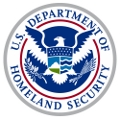US DHS Anti-Terrorism Standard
Monday 10 December 2007 at 12:00 am.
 The US Department of Homeland Security introduces the final rule for its Chemical Facility Anti-Terrorism Standard. Regulated materials include those substances, which pose a danger to the public surrounding chemical facilities, particularly in the event of terrorism.
The US Department of Homeland Security introduces the final rule for its Chemical Facility Anti-Terrorism Standard. Regulated materials include those substances, which pose a danger to the public surrounding chemical facilities, particularly in the event of terrorism.
On June 8, 2007 the US Department of Homeland Security published its final interim rule for its Chemical Facility Anti-Terrorism Standard. In November a final "Chemicals of Interest" list was finalized, listing over 300 chemicals. The list was primarily based on the EPA's Risk Management Program and on those chemicals included on the Chemical Weapons Convention list. These are materials which may cause great harm to the general population surrounding a facility, such as those chemicals which may create a toxic or flammable vapor cloud or are explosive in nature. Any facility, which manufacture, use, store or distribute listed chemicals above specified thresholds will be required to submit a CSAT (Chemical Security Assessment Tool) Top-Screen. This will be due no later than January 22, 2008 for Phase 2 facilities.
The CSAT Top-Screen compries four distinct parts: (1) facility registration, (2) consequence screening, (3) security vulernability and (4) site security. After the department receives this initial information they will determine the sites risk level. There are four tiers; highest risk facilities will be placed into Tier 1 and facilities of lowest risk will be identified by Tier 4. Companies in Tiers 1 and 2 will be required to re-submit this Top-Screen every 2 years, while others will be on a 3 year cycle. Covered facilities will also be required to undergo annual audits of their site security plans. The standard also mandates recordkeeping and training.
NOTE: Even if your company does not currently fall under this regulation due to insufficient quantities of the "chemicals of concern". It is important to remember, that notification under this rule will be required within 60 calendar days from the time a facility comes into possession of any of these chemicals above the threshold quantities.